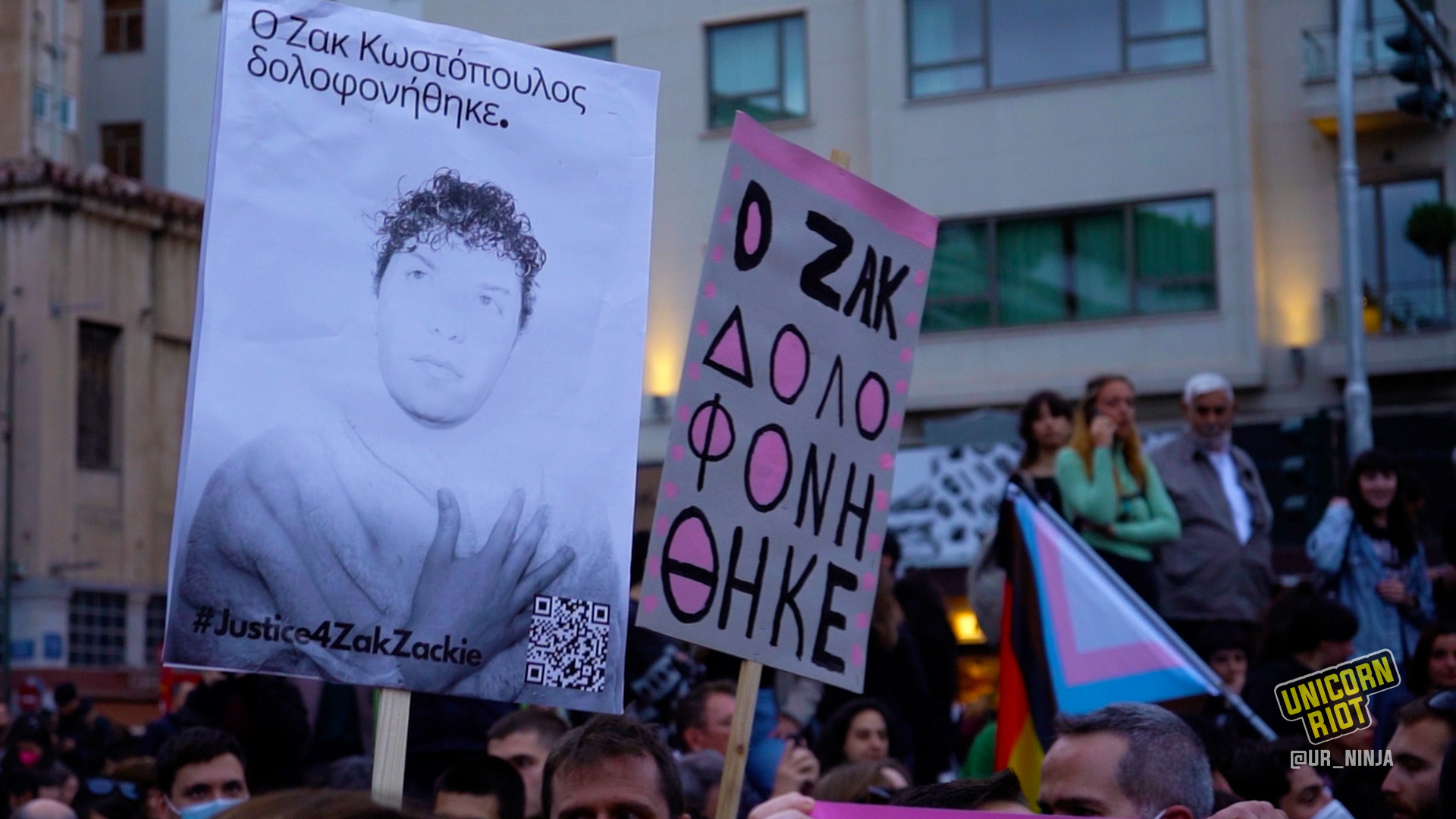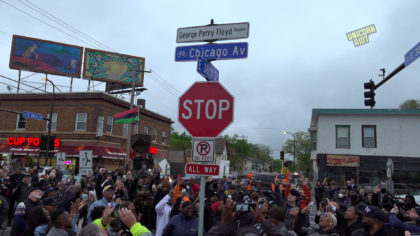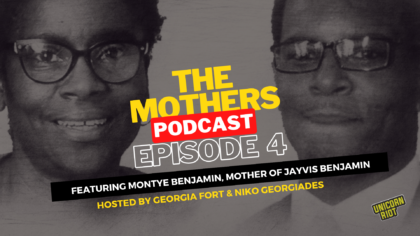Athens Police Acquitted in Death of Queer Activist Zak Kostopoulos/Zackie Oh
Athens, Greece – After seven months and 18 hearings, the trial for the public murder of 33-year-old Zak (Zacharias) Kostopoulos in the center of Athens, was completed in early May 2022. On September 21, 2018, Kostopoulos was killed from an altercation with two shopkeepers, nine police officers, two paramedics and dozens of apathetic passers-by.
Zak Kostopoulos, or Zackie Oh, as his drag queen persona was called, was a well-known activist of the LGBTQI+ community in Athens and an advocate against the stigmatization of HIV patients. Many call his murder a lynching with a clear homophobic motive.
An Athens Mixed Jury Court found shopkeepers Spyridon Dimopoulos and Athanasios Chortarias guilty by a majority of 5 to 2 for the offence of causing fatal bodily harm, while acquitting four police officers given the same charges by a close majority of 4 to 3.
Dimopoulos and Chortarias were sentenced to 10 years in prison. Prosecutor Sotiris Bougioukos proposed the rejection of all mitigating circumstances for the two guilty, a proposal that was unanimously accepted by the court. For the final sentence the prosecutor proposed 8 years imprisonment for each of them. The court unanimously decided on 10 years imprisonment for each of the two guilty parties, with no suspensive effect on their appeal.
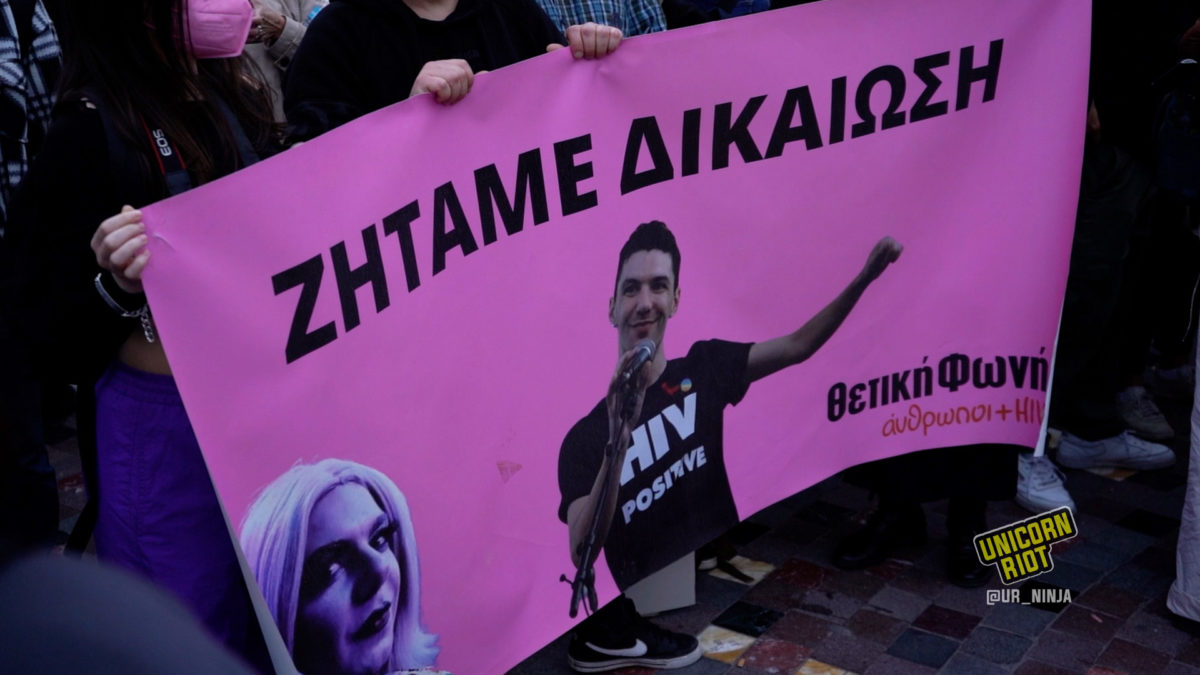
The Chronicle of the Murder
September 21, 2018
“Savage beating of a would-be robber,” “Drug addict robber self-injured by broken windows as he tried to escape,” “Drug user, 33-year-old perpetrator.” “Dead man who attempted to rob a jewelry store in central Athens.” These were the titles of hundreds of articles and a series of videos, some of the most shocking and cruel Greece has ever seen, that were circulated on the Greek internet that day.
The videos show a young man trapped inside a jewelry shop and two others, the owner of the shop and the real estate agent next door, throwing objects/rocks towards him from outside.
When he tries to escape, crawling through the front window, they kick him furiously in the head until some people restrain them. Many passers-by looked on but did nothing.
In the videos, we see nine police officers making a violent arrest, beating him and tying his hands with zip-ties while the man lays on the sidewalk seeming to be unconscious. Paramedics rushed to the scene but did not remove the zip-ties.
The 33-year-old Zacharias Kostopoulos eventually succumbed to his injuries while in the ambulance on his way to the hospital with his hands still tied. The first reports spoke of an ischemic episode, the restriction of blood flow and reduction of oxygen, as a cause of death.
Despite the testimonies and investigations it is still unclear after all this time how Zak ended up in the jewelry store. Before that, he was seen at a corner bakery a few yards away, where four people are seen on a CCTV camera blocking his entrance. One of them walks into the bakery and buys him a bottle of water. Kostopoulos stays at the spot for about half a minute and then heads left towards the jewelry shop.
Several eyewitnesses at this point confirm that he appeared to be calling for help and trying to protect himself.
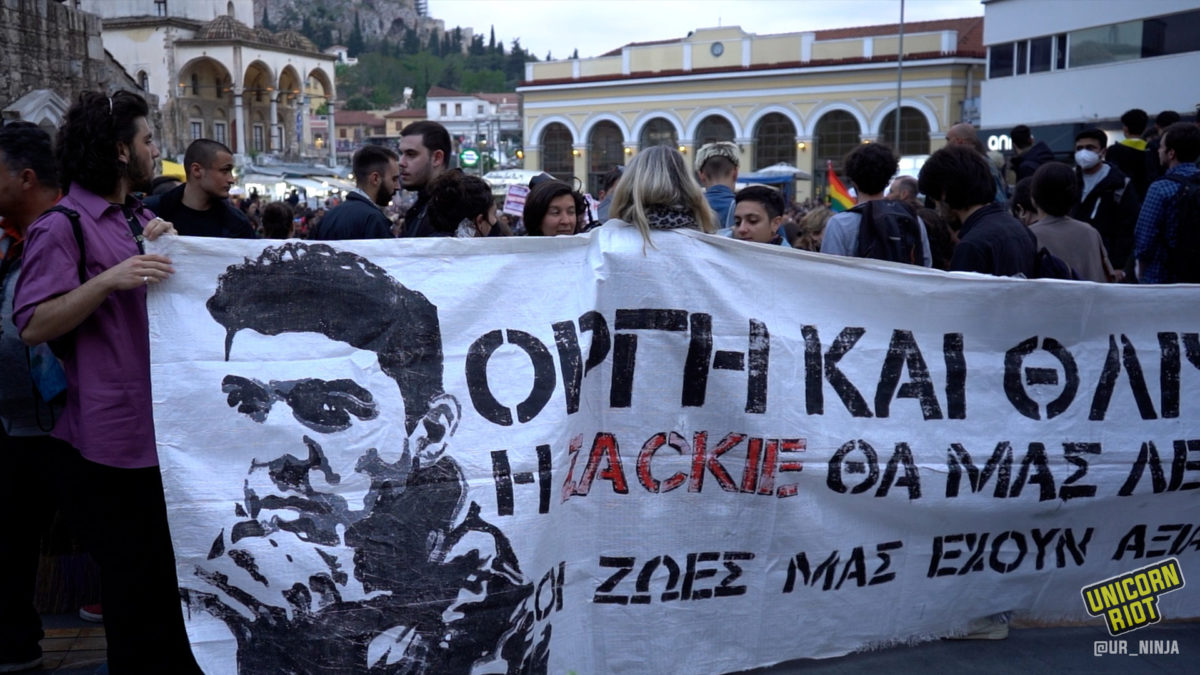
The Narrative of the “Thieving Junkie”
Spyridon Dimopoulos, the jewelry shop owner, was quick to make statements saying he had taken legitimate defensive measures to prevent an armed man on a drugged rampage from robbing his store. These statements were reproduced verbatim by the media, while police statements were shared in the same vein.
Finally, after multiple videos were made public, both the jeweler and the broker are arrested. Their apologies are identical to the initial statements: ‘I saw him looking for money,’ ‘he was holding a knife in the shop,’ ‘Zak broke the window,’ ‘I just tried to restrain him.’ From what emerged from the eyewitness testimonies and the videos that have been released, is that all of their allegations were false.
It was Dimopoulos and the real estate agent, who broke the glass window that Zak was trying to pull on to get out. It was Dimopoulos that kicked Kostopoulos in the head as he was crawling over broken pieces of glass. The results of fingerprint testing, which was done on the cash register, the counter, the door and the knife, showed that Kostopoulos’ fingerprints were only on the outside of the glass door of the store and on no other part or object. Therefore, the robbery narrative began to fall apart.
What was left was the narrative that Zak was under the influence of drugs. From the toxicology tests that were conducted, no drugs were detected in Kostopoulos’ system.
The test is positive only for organic drugs, where reportedly a substance contained in common analgesic drugs was detected, along with a very small amount of alcohol.
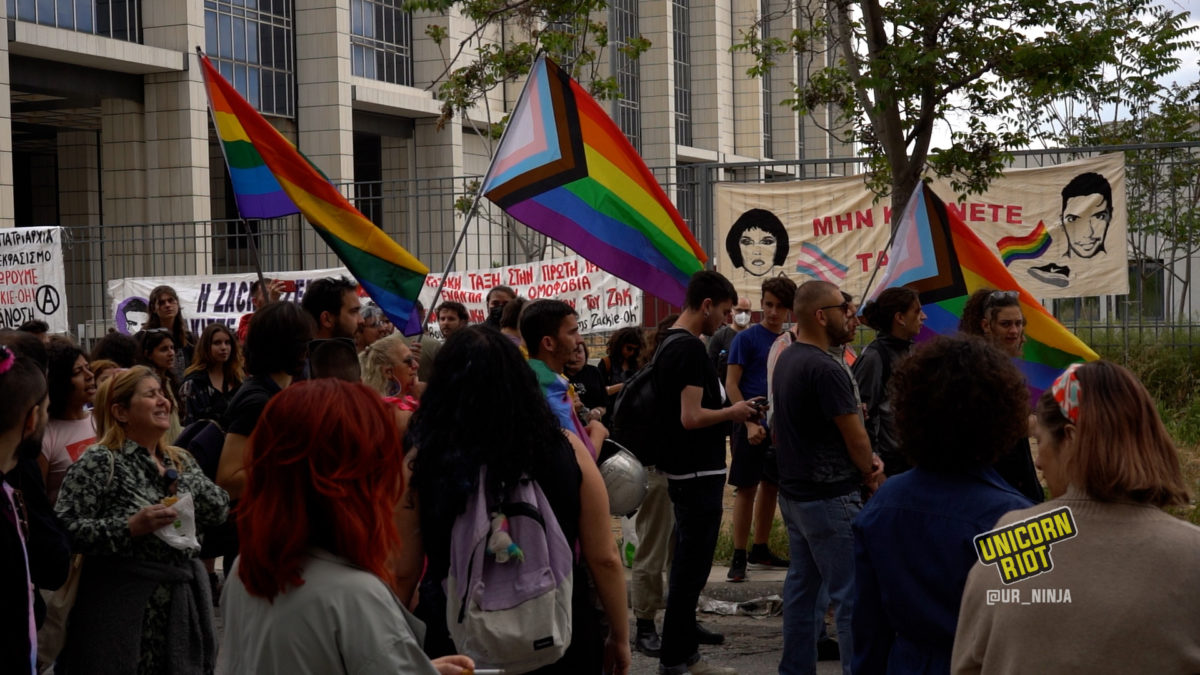
The Autopsy
The forensic conclusion states that multiple blows, especially those to the head, are linked to the severe traumatic shock of the victim and ultimately the ischemic-type myocardial lesions. The death would not have occurred if the victim had not been injured with great severity. In addition to the toxicological tests, the histological examinations of Kostopoulos were completed.
The macroscopic and microscopic investigation showed, among other things: intense congestion of the vessels of the brain and the leptomeninges with focal red blood cells, intense edema and congestion of the lungs with the presence of activated macrophage cells that phagocytose hemosiderin, ischemic-type lesions of the myocardium.
Simply put: he was beaten to death.
“The Policemen Did a Perfect Job”
“The policemen did a perfect job,” were the exact words of a police unionist on a news panel only days after the murder of Kostopoulos, while the narrative that he was armed with a knife was not dismantled yet. The police played a role in Kostopoulos’ death from the beginning. Videos of police violently arresting his lifeless body and beating him circulated very quickly.
With past practice in similar cases, police have deflected responsibility of wrongdoing and in Zackie Oh’s case, they were suspected of the same. Yet, four of the nine police officers who operated at the scene were found accused in December 2018, several months later.
From the immediate days after the murder, the lawyers for Kostopoulos’ family indicated that an attempted ‘cover-up’ was happening. They complained about the investigators’ reluctance to collect evidence and the delay in submitting it to the investigating judge. A week after the murder, there was neither a fingerprint examination report nor CCTV footage of the jewelry store and surrounding shops, even after a second request by the investigator to the police; under such circumstances, the case file was being formed during the investigative process.
Despite many people that can be seen in the videos that were on the scene taking videos of their own, police did not seek out all the witnesses to testify. At the same time, they did not bring in camera footage from nearby stores, which would have included the fatal beating incident itself and what preceded it.
Reluctance to cooperate with the authorities was also prevalent with regard to the recordings of transmissions from the respective operation centers of the Greek Police and the ambulance center. While these records had already been requested in the first days after the murder, in September 2018, there had been no response from the relevant police services until four and a half months later.
Data of the transmissions, together with others, which the National Police didn’t collect, could clarify the real questions surrounding the events.
Many Greeks depended on independent media outlets like OmniaTV and EFSYN for information on the case as mistrust in the police and mainstream media grew. Greece ranks last in the European Union for press freedoms, falling 38 spots since 2021 in the 2022 World Press Freedom Index by Reporters Without Borders.
OmniaTV, Grassroots Independent Media in Greece
A crucial role was played by the reporting research agency Forensic Architecture. Their investigative team uncovered a key witness, “the man in the yellow t-shirt.” Nearby cameras picked up the yellow t’eed man who was found to have been present from the beginning of the incident when Kostopoulos originally sought help at the bakery, until the end when he’s seen standing next to the police officers at the time they arrested the lifeless Kostopoulos.
From the very beginning it was clear to the defendants and the people in solidarity that the forensic work was sloppy, if not non-existent. The crime scene was not evacuated or cordoned off. In numerous images, such as the one in which the jeweler is shown sweeping, we see that there is plenty of material in the store (glass, bloodstains, fire extinguisher, items in the window) capable of keeping forensics busy for days.
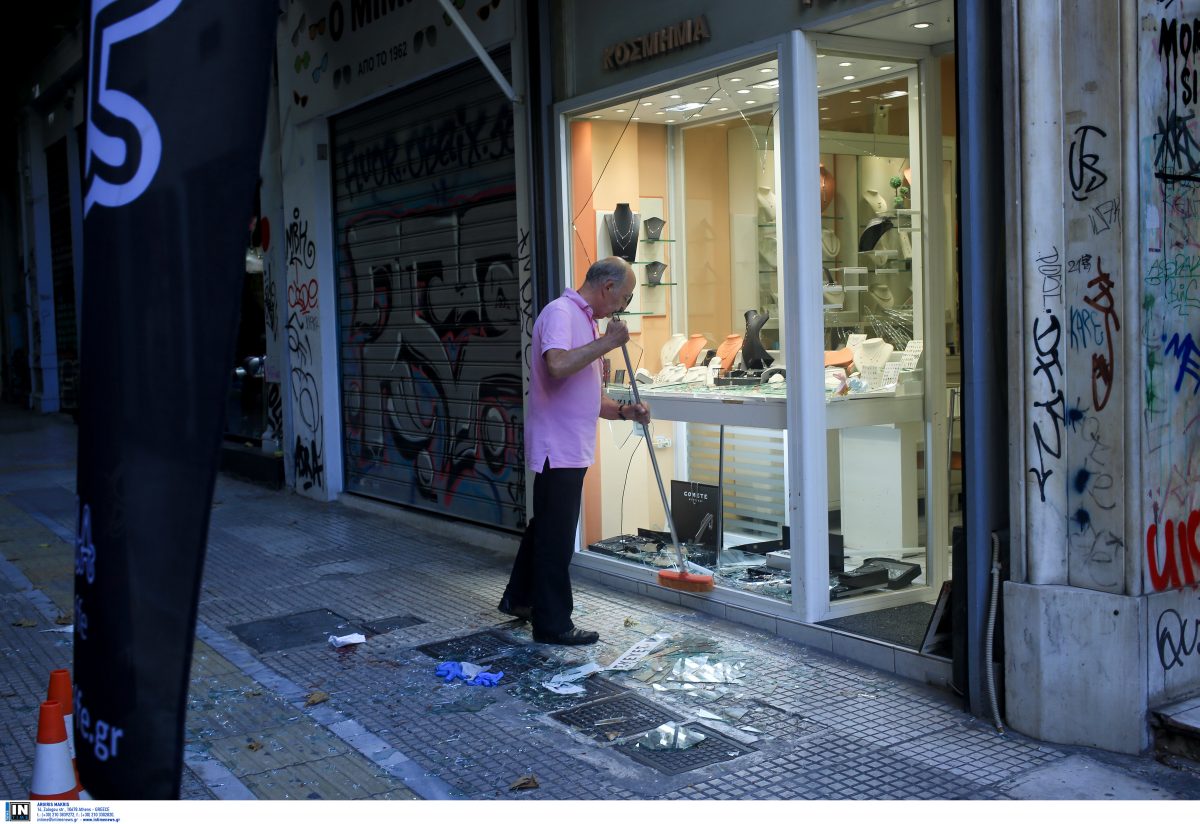
A few hours after Kostopoulos’ death, cleanup occurred with no one attending the crime scene. According to an eyewitness coming around 4 p.m. the windows to the shop were rolled up and the store shutters were down. However, although forensics investigators appears to have collected fingerprints, there is no search report on the premises in the case file.
In December 2018, four of the nine police officers involved at the scene of Zackie Oh’s death were charged with fatal bodily harm.
The Police and Media Interlocking, the Common Laundry
The police deliberately profiled Zak as a drug addict, thereby justifying the murder and escaping responsibility while activating the general societal ignorance and stereotypes surrounding drug-dependent people. This was achieved by what’s becoming a standard tactic in Greece, selective leaks to the press. A major issue arose from this, violating the principle of a fair trial, part of which is the inquiry stage.
Just two weeks after Kostopoulos was killed, a well-known police editor, reported that anonymous sources inside the police department said that Zackie Oh “had allegedly engaged in extensive drug use” in the days before his death … and his condition deteriorated on the fatal day.”
The report speculates that Kostopoulos was in such a drugged-up state of paralysis that he entered the jewelry store daring to steal while “having a minimal awareness of his actions.” Continuing the postulation, the police sources reportedly said “it has happened in dozens of other cases of robberies that the perpetrator due to the use of certain substances has no suspensions and acts without imputation.”
As of now, no consequences have come to the officers involved in Kostopoulos’ death. Yet, after several adjournments achieved by the lawyers of the police officers, the conclusion of an internal examination recommended the suspension of the four officers from the force, the maximum punishment that this disciplinary body can impose. However, no official move has been made in this direction.
Apart from the two citizens accused and the policemen who were complicit in the killing, the responsibilities of the paramedics, who committed many inconsistencies in their statements, have not been systematically investigated.
The most crucial question of all is whether giving Kostopoulos a Cardiopulmonary Resuscitation (CPR), that was not and could not have been done properly with the victim’s hands tied behind his back, would have been life-saving.
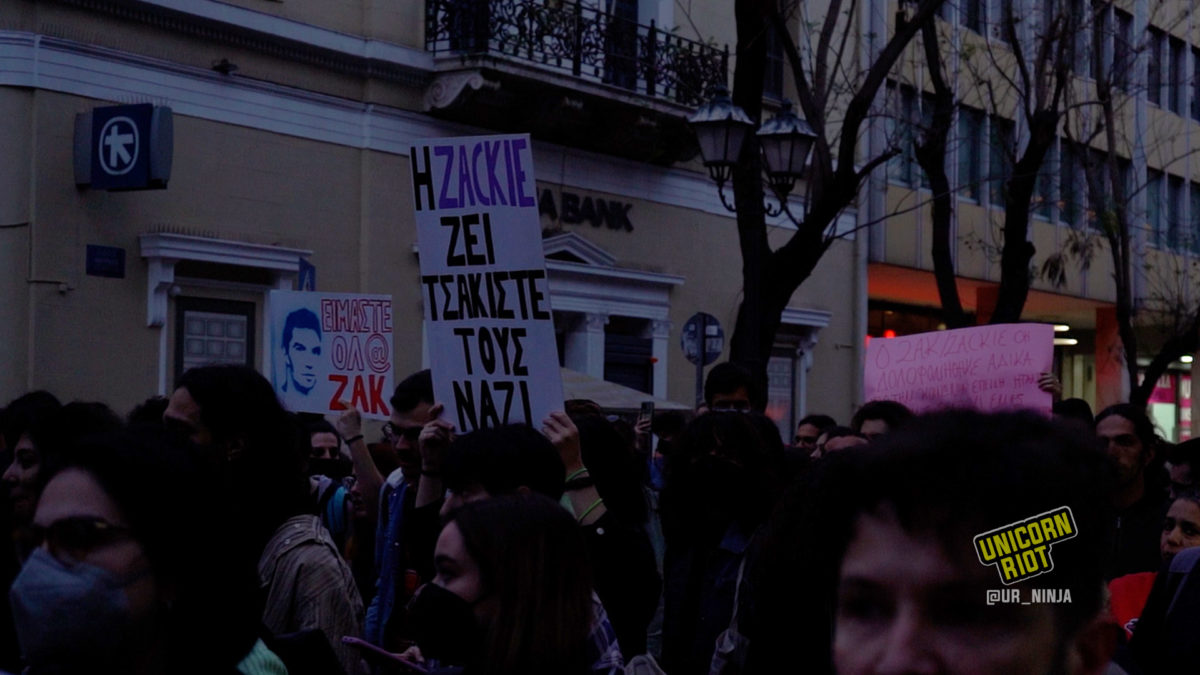
The Trial
From the beginning of the investigative process and the formation of the case file, the prosecution fought to change the charge against the two citizens from fatal bodily injury to manslaughter with possible malice aforethought. The pleas by the lawyers for the Kostopoulos family were rejected by the Prosecutor’s Council. The prosecution’s proposal was accepted and the six defendants were indicted on the charge of fatal bodily injury.
Nearly three years after Kostopoulos was killed, in July 2021, the Athens Plenary Prosecutor announced the dismissal of the Kostopoulos family’s manslaughter charge proposal against all the police officers involved in his fatal beating as well as against the medical personnel for the offense of fatal exposure.
On October 20, 2021, the trial began.
The defense centered around incriminating the victim, slandering witnesses, distorting testimonies and disrespecting Kostopoulos’ family. ‘I smacked him two or three times, maybe I got a little carried away,’ said the jeweler, without ever straying from the narrative that Kostopoulos had come to his jewelry shop to rob.
Several eyewitnesses underlined the murderous rage of the two defendants, while one reported that after the violent arrest, which turned out to be fatal, a police officer referred to Zackie Oh as a “faggot.” Yet, the homophobic motive had not been investigated at any stage of the proceedings, although it had been requested by a prosecutor.
During the police officers’ apologies, they insisted that they acted on the basis of the principle of proportionality since they believed Kostopoulos was dangerous.
After 17 hearings, the prosecution’s proposal was reached. The prosecutor Sotiris Bougioukos managed to reconcile two incompatible and mutually exclusive logical assumptions in his summing up at the Athens Mixed Jury Court: that the two perpetrators of the murder of Zak Kostopoulos, the jeweler and the real estate agent, acted with intent, knowing that they would kill, but at the same time they killed out of negligence and recklessness.
The prosecutor then recommended their acquittal even while acknowledging that the officers’ blows during the arrest played a role in Kostopoulos’ death.
This suggestion was followed by the bench in the 18th and final hearing, convicting the jeweler and the real estate agent and acquitting the police officers.
From the very beginning, Zak’s case had not only a legal but also a social side, which intertwined with each other. Kostopoulos’ murder formed a movement that spread throughout Greece and through which a colorful, diverse and combative LGBTQI+ community emerged that established a visibility that was unprecedented for the Greek reality.
This movement asserted its pride and denounced discrimination based on gender and sexuality, those structural social and institutional discriminations that many believe were responsible for Zackie Oh’s death. This movement often joined the anti-fascist/anti-racist and feminist movements and consistently took to the streets reclaiming public space and discourse. Without it, this judicial outcome may have never been reached. Without it, Zak’s case may have ended up in a dusty drawer somewhere. Thus, the movement that arose with his death can look at this conclusion as no reason for defeatism and pessimism.
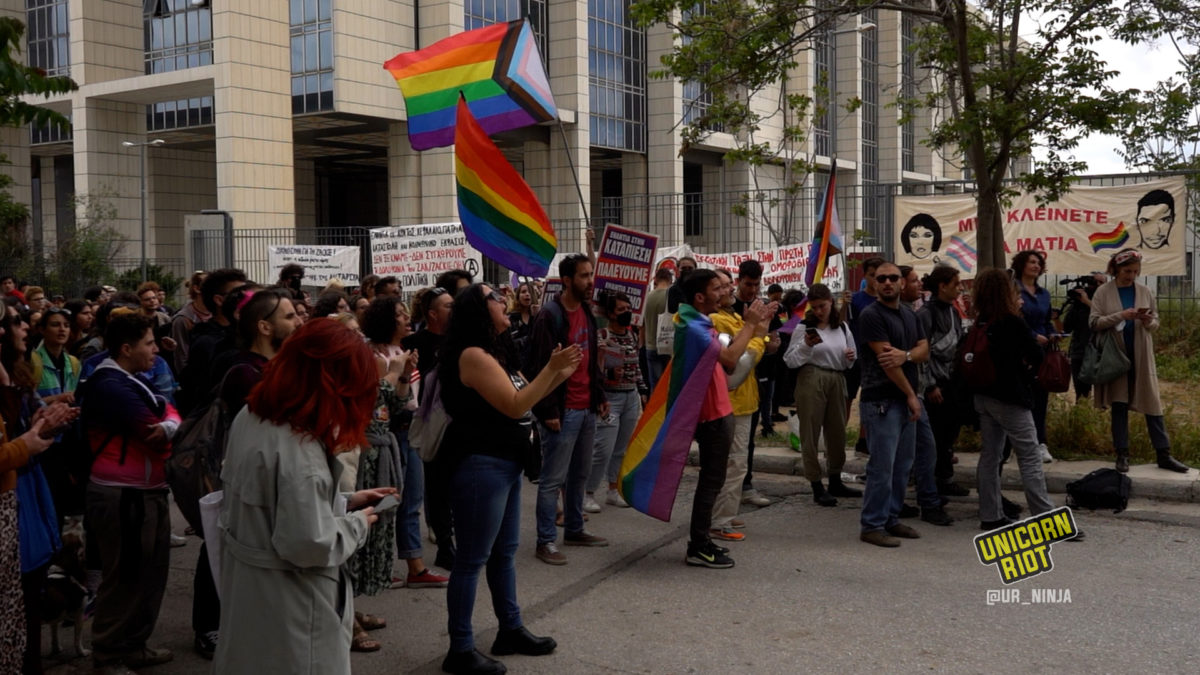
For more media from Greece, see our Greece archive page.
Follow us on X (aka Twitter), Facebook, YouTube, Vimeo, Instagram, Mastodon, Threads, BlueSky and Patreon.
Please consider a tax-deductible donation to help sustain our horizontally-organized, non-profit media organization:

